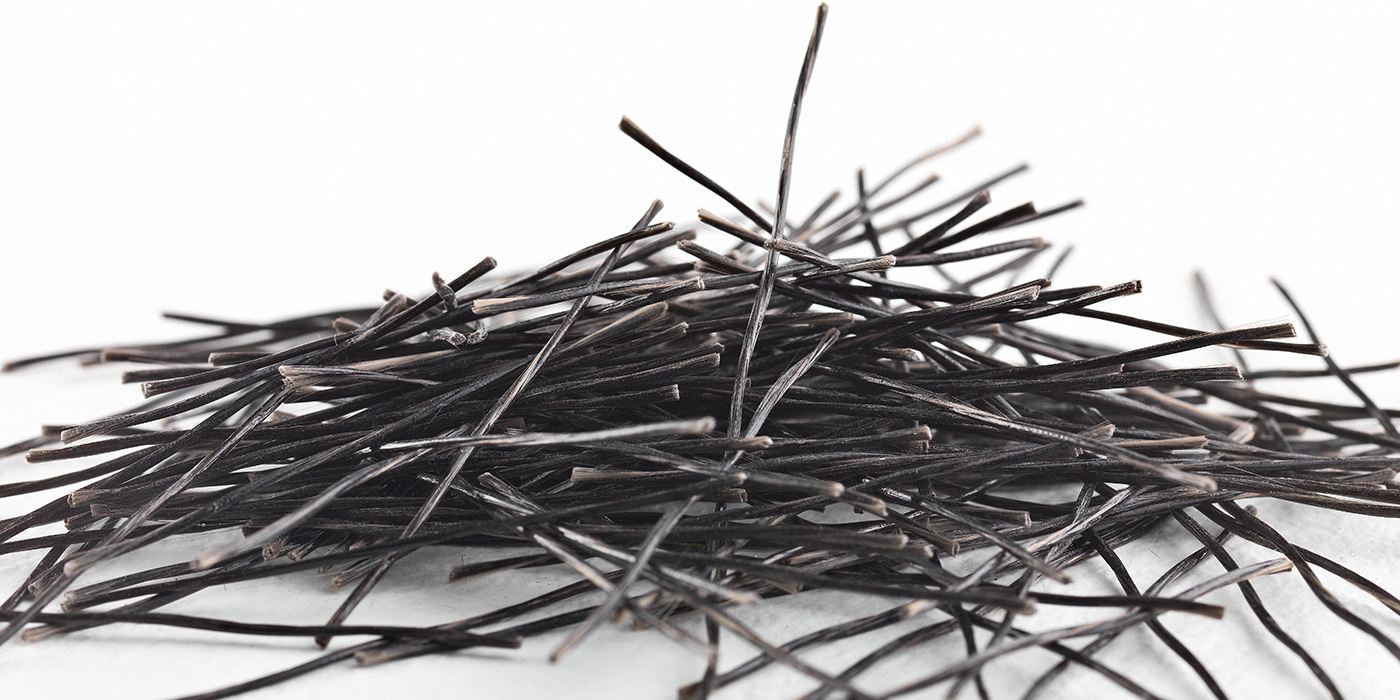
MiniBars™
High performance composite macrofiber for concrete reinforcement
MiniBars™ solution is a high-performance composite macrofibre, based on an alkali-resistant glass fibre or basalt and engineered to provide high post-cracking strength to concrete while at the same time increasing toughness, impact, and fatigue resistance of concrete. MiniBars™ macrofibre can be used as secondary and/or as primary reinforcement. MiniBars™ fibre disperses quickly and evenly throughout the concrete matrix, due to their specific gravity being similar to concrete. This promotes uniform performance throughout the concrete mass.
Benefits
Applications
MiniBars™ solution has been specifically designed to reduce or replace secondary and/or primary steel reinforcement in many structural applications requiring flexural tensile and post-crack performance (wall panels, pipes, water tanks, tunnel segments, marine structures, raft foundations, etc.)
MiniBars™ fibres can be added to the wet mix at the batching plant or into the concrete truck at site. For optimum dispersion and performance, it is recommended to add the fibre gradually. Ask for dosing instructions from your sales representative.
Dosage rates (kg/m3) are dependent on the application and desired performance levels.
MiniBars™ fibres in the 55mm length are packed in 8kg (17,6 lbs) cardboard boxes. MiniBars™ should be stored away from heat and moisture in their original packaging.
Optimum conditions are temperatures between 10°C (50ºF) and 35°C (95ºF) and relative humidity between 25% and 65%.
MiniBars™ fibres are manufactured under a quality Management System approved to ISO 9001 and tested with IBAC at Aachen University, University of Akron and NTNU Gjøvik
Basalt MiniBars ETA-20/0599, Cem-Fil MiniBars™ ETA19/0246. Ref Environmental ReforceTech Product Declaration (EPD) available.
Basalt MiniBars™ are CE marked.
Technical Characteristics
| Material | Fiber Length | Fiber Diameter | Specific Gravity | Modulus of Elasticity | Tensile Strength |
|---|---|---|---|---|---|
| AR Glass or Basalt + thermoset resin | 55 mm* 2.16 in. |
0.70 mm 0.03 in. |
2.1 | 43 GPa | > 1200 MPa / |
| Material | Alkali-resistant glass+ thermoset resin |
| Fiber Length | 43 +/-2 mm* 1.7 +/- 0.08 in. |
| Fiber Diameter | 0.70 mm 0.03 in. |
| Specific Gravity | 2.0 ± 0.1 |
| Modulus of Elasticity | 42 GPa 6,091,585 psi |
| Tensile Strength | > 1000 MPa / 145,038 psi |
* Contact your sales representative for the optimum fiber for your grade of concrete
Mechanical Performance
The fundamental mechanical performance of fiber reinforced concrete can be obtained from a three-point bending test performed on a prismatic beam of 150×150×550mm (6×6×22in.) including a notch at mid-span (EN 14651). The displacement-controlled testing system introduces a specific deflection rate, and records load and displacement up to a CMOD limit of 3.5 mm (0.14 in). The fiber reinforced concrete performance is evaluated by means of residual flexural strength values at 0.5, 1.5, 2.5, and 3.5mm (0.02, 0.06, 0.10, and 0.14in.) of CMOD, namely fR1, fR2, fR3 and fR4, respectively.
According to the fib Model Code 2010, the constitutive law of the material in tension is defined by means of the tensile stresses fFts and fFtu, calculated from fR1 and fR3 for service and ultimate limit state, respectively.
This information and data contained herein is offered solely as a guide in the selection of reinforcement. The information contained in this publication is based on actual laboratory data and field test experience. We believe this information to be reliable, but do not guarantee its applicability to the user’s process or assume any responsibility or liability arising out of its use or performance. The user agrees to be responsible for thoroughly testing any application to determine its suitability before committing to production. It is important for the user to determine the properties of its own commercial compounds when using this or any other reinforcement. Because of numerous factors affecting results, we make no warranty of any kind, express or implied, including those of merchantability and fitness for a particular purpose. Statements in this publication shall not be construed as representations or warranties or as inducements to infringe any patent or violate any law, safety code or insurance regulation. ReforceTech reserves the right to modify this document without prior notice. All Rights Reserved.